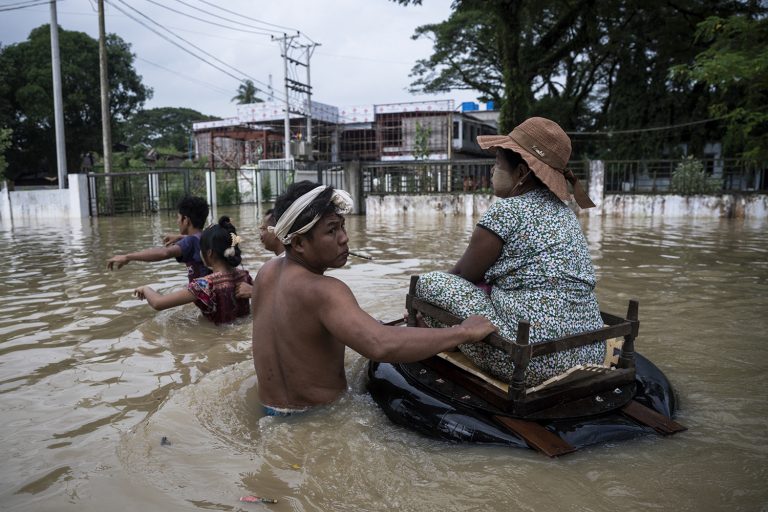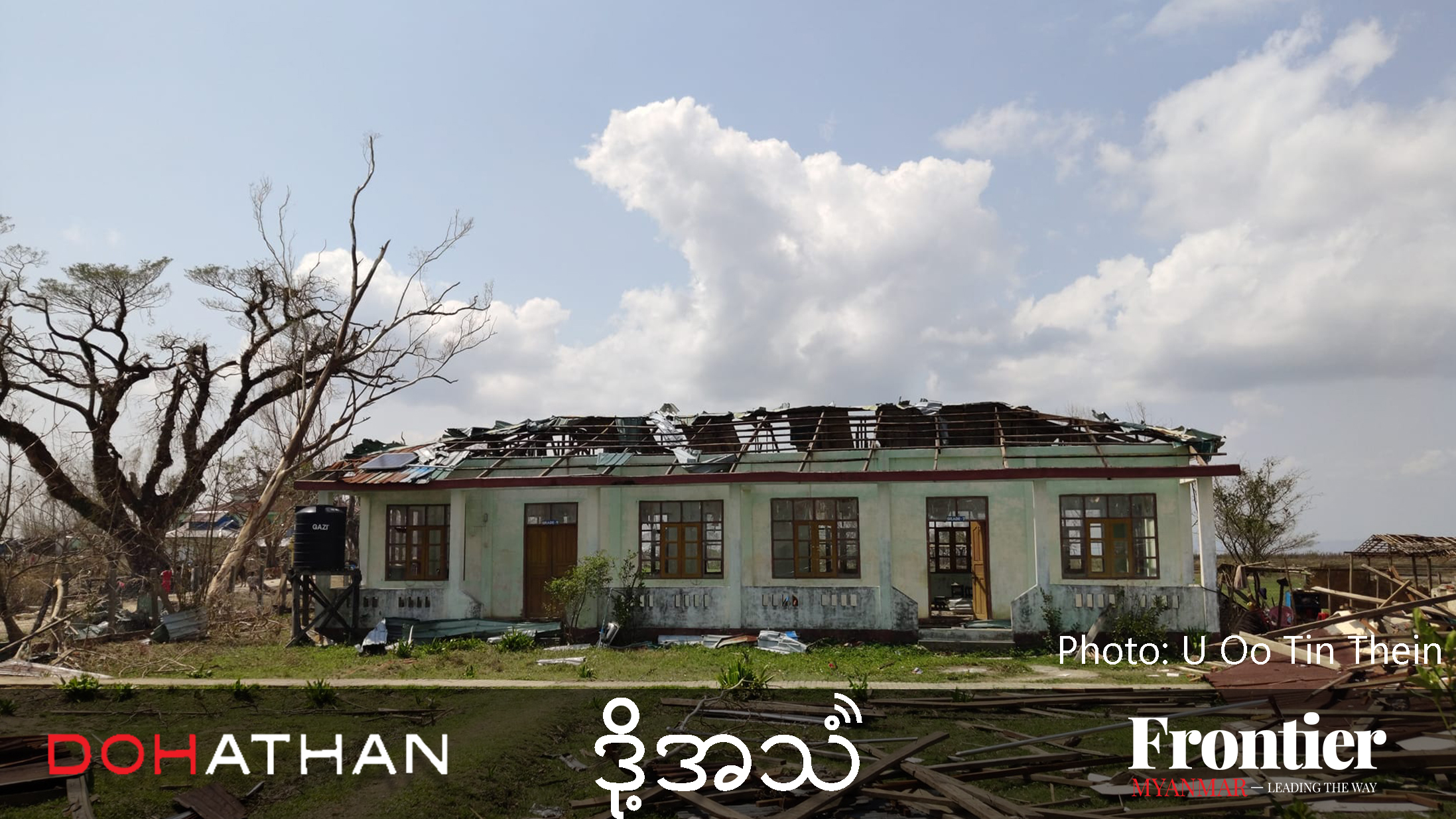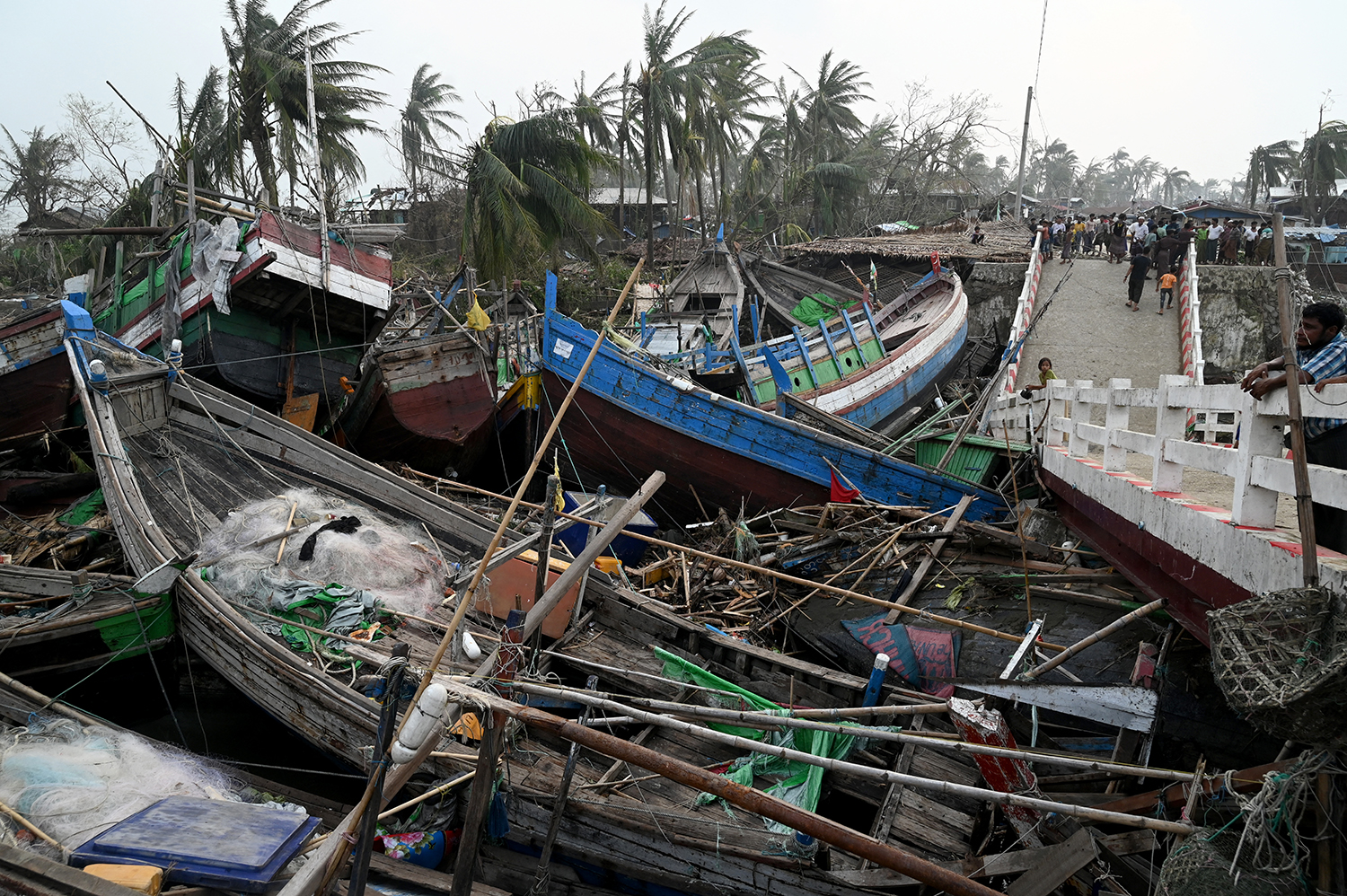In Myanmar, if you have a car accident or your house burns down, who covers your losses? In most cases, the answer is simple: you do.
A survey in 2013 found that only 7.6 percent of the population has bought insurance products, either from financial institutions or through unregulated, informal schemes.
That might be changing, though. For decades, if you needed insurance in Myanmar, state-owned and run Myanma Insurance was your only option. In 2012, the government legalised domestic private insurers, but the industry remains hampered by a lack of technical expertise and products tailored to meet the needs of the market.

AFP
Although the government no longer holds a monopoly, the industry remains highly regulated and uncompetitive. The government limits the types of coverage private insurers can provide, and they are legally barred from setting their own premiums. Having the same premiums across the board makes it difficult for private insurers to differentiate their products from those of competitors.
“For the consumer or insurance policy buyer, [insurance companies] mainly compete on the service level and at the moment that is the only way for companies to distinguish themselves,” said Dr Aung Thura, chief executive officer of financial consultancy Thura Swiss.
Support more independent journalism like this. Sign up to be a Frontier member.

A farmer waters a field near Bagan. (Francois Xavier Marit / AFP)
Liberalization vs protectionism
Taken at face value, this partial liberalisation might appear to be classic protectionism, the kind of behaviour one would expect from an inefficient state-run enterprise unwilling to let go of its monopoly. But Dr Aung Thura argues that, for now, such measures are necessary while the industry finds its footing. He referred to a severe shortage of qualified actuaries to credibly assess risks and set premiums, which could prompt a dangerous race to the bottom.
“If insurance companies compete on pricing, they might get cheaper and cheaper, without knowing if they are taking risks that are not appropriate,” he said. “It’s really a matter of time until Myanma Insurance will let local companies do more. It’s a question of confidence in their capabilities.”
The structural weaknesses of the domestic insurance industry have little bearing on foreign investors, whose premiums are underwritten by foreign re-insurers. But companies operating in Myanmar are not allowed to buy cover directly from international firms, and must instead use Myanma Insurance, whose policies are then guaranteed by a big foreign insurer.
The fact that international re-insurers – many of which have set up representative offices in Yangon – cannot provide direct services to customers is similar to the way the banking sector has been protected in the wake of economic reforms since 2011. The first of nine foreign banks granted approval to operate in Myanmar in decades opened in April, under restricted licences that allow them to open one branch, make foreign currency loans to foreign companies operating in the country and to domestic banks. They are banned from offering retail banking services. It appears that similar restrictions will apply to the insurance industry for the foreseeable future.
“The whole insurance industry started less than three years ago, so it’s not very open yet to foreign investment at this stage, because the local industry needs to play catch-up and develop before foreign investment will be allowed in a broader style,” Dr Aung Thura said.

A survivor of the 2011 Myanmar earthquake jumps over a car crushed under the debris of a destroyed house. (Soe Than Win / AFP)
Out in the fields
Established financial institutions have historically taken little interest in tailoring products for Myanmar’s rural masses, but there has been a discernible spike in microfinance lending since the onset of reforms. Despite borrowing constraints and currency fluctuation fears, micro-lending – the provision of small loans to people who would otherwise have no access to formal financial instruments – is a key tool for reducing poverty and improving rural livelihoods.
Although farmers now have better access to loans, they are often used to cover losses caused by poor harvests or bad weather rather than investing in agricultural equipment to boost productivity.
Repayment rates on micro-loans provided by formally-recognised financial institutions are high, and farmers often sell livestock to pay off losses, masking the true fragility of their situation and obscuring the cycle of debt.
“Throughout Myanmar, you see strong repayments, so you might think they don’t really need insurance right now,” said Conor Smith, the finance and operations manager at Proximity Designs, a Yangon-based social enterprise. “But a lot of times, in order to make repayments, people are selling off assets, which, in the long term, can really reduce their income-generating abilities,” Mr Smith said.
“If [farmers] have had a particularly bad yield, they’ll sell off one or two pigs to get them through that season,” he said.
One way to mitigate these issues is by selling micro-insurance plans: risk mitigation products designed for Myanmar’s poorest. To date, however, such schemes have not yet been rolled out on any meaningful scale in Myanmar.
Micro-insurance – which generally covers life, accidents, livestock and crop failure – was pioneered in East Africa, but has enjoyed increasing popularity throughout the Asia-Pacific region in recent years.
“To be viable, these products would generally need to be bundled with other financial services – like loans – as the margins on them are bound to be low,” said Mr Smith. “If you’re selling it as a standalone, the premiums wouldn’t be large enough to make it viable to have agents or representatives selling the product,” he said.
Mobile phone penetration has increased rapidly since Ooredoo and Telenor started operations last year, and mobile technologies can be a key tool for payments and financial services, including insurance. In neighbouring Bangladesh, a tie-up between mobile financial services firm Bima and the country’s second-largest mobile service provider, Robi Axiata, offers customers a US$650 (about K750,000) life insurance policy for free if they spend US$3.20 (about K3,700) or more on phone credit each month.
Such schemes may eventually be practical in Myanmar, but it will take time to build the necessary telecommunications infrastructure. If products designed to protect farmers are to be introduced in the meantime, insurers will need a way to assess damage to pay claims. One way around this technical barrier is a system known as weather index-based insurance, which saves time and expense because it eliminates the need to individually assess losses on a farm-by-farm basis.
When adverse weather affects a large area, insurers use meteorological data to determine the severity of damage to crops, and use this data to calculate payouts to farmers.
A Japanese insurance firm, Sompo Japan Nipponkoa, plans to soon introduce weather index-based insurance in cooperation with Myanmar partners.
Weather index-based systems may offer a way to provide farmers with protection where they currently have none, and could be the most efficient way for insurers to accurately and efficiently assess damage.
“From an actuarial standpoint, you have more data to work with using the weather data than you would with whatever other data you might be able to collect,” Mr Smith said.






